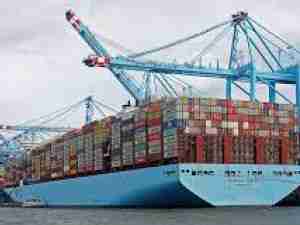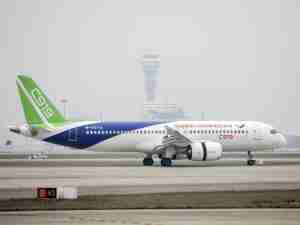Key insights:
1. Ocean carriers are for the most part keeping to diversion-adjusted schedules to N. Europe and N. America by increasing sailing speeds and adding more vessels to services. These steps are reducing delays and avoiding congestion at major import hubs on these lanes.
2. Nonetheless, there are reports of more significant disruptions at some Indian ports. Likewise, some carriers are reducing turnaround times by unloading Mediterranean-bound containers in Europe causing additional lead time for Mediterranean shippers, and intra-Middle East trade is now reliant on feeder vessels as well.
3. Though challenges in ocean freight have not led to a widespread surge in air cargo volumes or rates there have been reports of congestion at specific hubs, like Dubai and Bangkok which had to temporarily stop accepting cargo last week. These conditions are likely to become less common though as ocean freight stabilizes and LNY demand subsides too.
Ocean rates - Freightos Baltic Index:
• Asia-US West Coast prices (FBX01 Weekly) increased 1% to $4,889/FEU.
• Asia-US East Coast prices (FBX03 Weekly) climbed 3% to $6,764/FEU.
• Asia-N. Europe prices (FBX11 Weekly) fell 2% to $4,587/FEU.
• Asia-Mediterranean prices (FBX13 Weekly) increased 1% to $5,802/FEU.
Air rates - Freightos Air index
• China - N. America weekly prices decreased 7% to $3.65/kg
• China - N. Europe weekly prices fell 15% to $2.97/kg.
• N. Europe - N. America weekly prices increased 1% to $2.05/kg.
Analysis
A discernible lull in the frequency and effectiveness of attacks on Red Sea traffic in the last couple weeks had some hopeful that US-led steps to degrade Houthi capabilities were succeeding. This week’s renewed aggression on commercial vessels though, including one that led, for the first time, to an abandoned ship, may suggest that there is still a long way to go.
Ocean carriers are for the most part maintaining their adjusted schedules for departures and arrivals on lanes with now longer journeys by both increasing sailing speeds and adding more vessels to these services. With these strategies in place, carriers are reducing delays and have succeeded at avoiding congestion at major European and N. American import hubs.
With this overall success, not all shippers are coming out unscathed. The focus on maintaining the integrity of the major Far East to Europe and N. America trade lanes – especially during the lead up to Lunar New Year – may have contributed to the more significant disruptions seen recently at some Indian ports. Some carriers are also reducing vessel turnaround times by unloading Mediterranean-bound containers in Europe causing additional lead time for Mediterranean shippers, and intra-Middle East trade is now reliant on feeder vessels as well.
Other knock-on effects may include reduced equipment and capacity leading to sharp rate increases on non-Red Sea lanes, like the transatlantic, where ocean rates have climbed 44% to nearly $1,800/FEU since the start of February.
The longer transits have absorbed much of the excess capacity that characterized the container market before the Red Sea disruptions. But as demand will likely ease in the coming, post-LNY weeks, and rates have leveled off to N. America and are decreasing to Europe, there are reports that carriers could start reducing capacity through blanked sailing to try and protect some of the January rate gains.
Red Sea disruptions to ocean logistics have not led to widespread surges in air cargo volumes or rates out of Asia, with the global Freightos Air Index benchmark 5% lower than at the start of the month. Nonetheless, there have been reports of congestion due to a surge in volumes at specific air cargo or sea-air hubs, like Dubai and Bangkok which had to temporarily stop accepting cargo last week. These conditions are likely to become less common though as ocean freight stabilizes and LNY demand subsides too.











